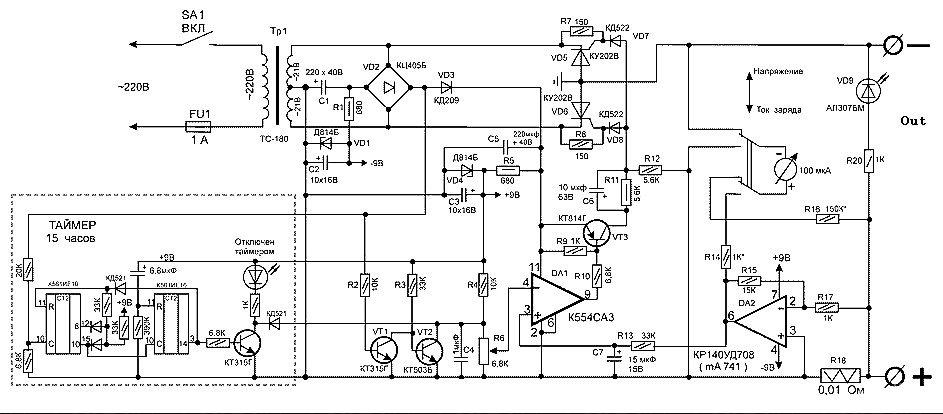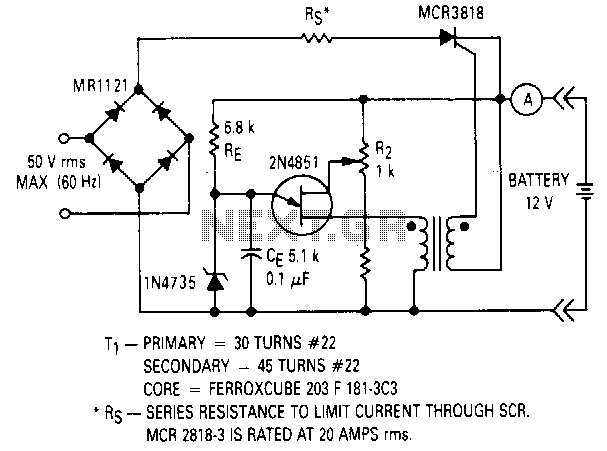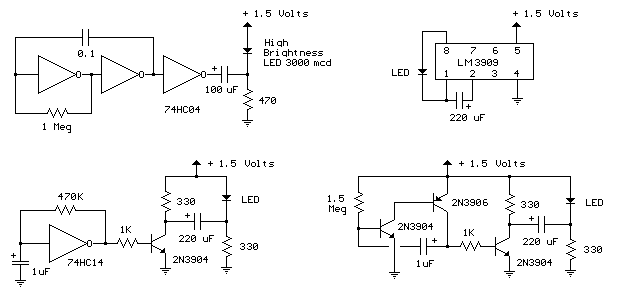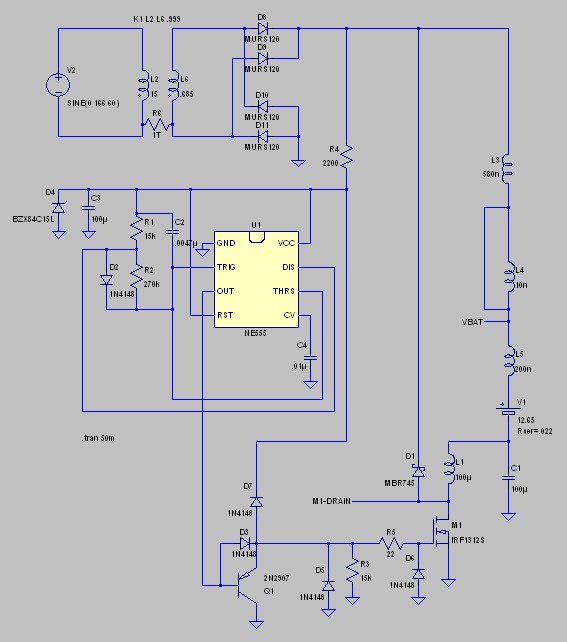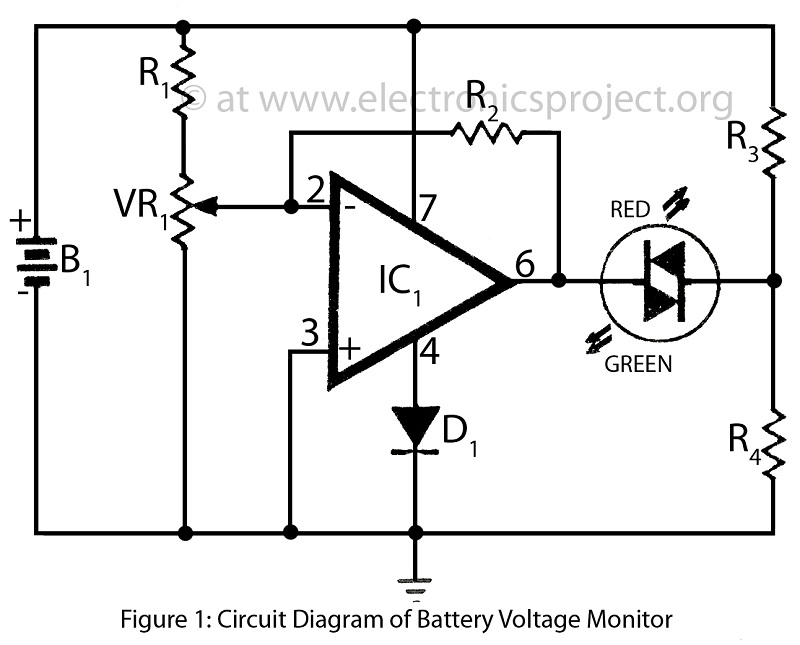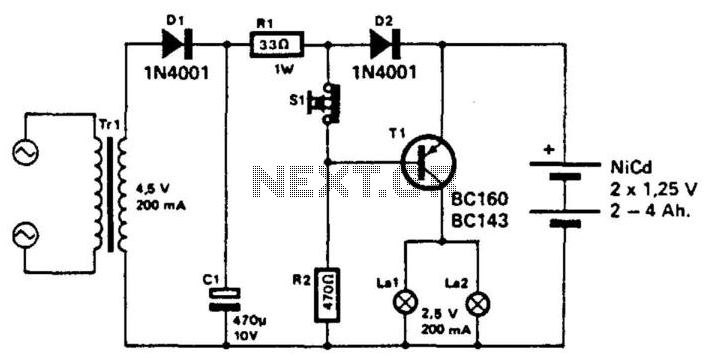
Battery Guard for Emergency Lights
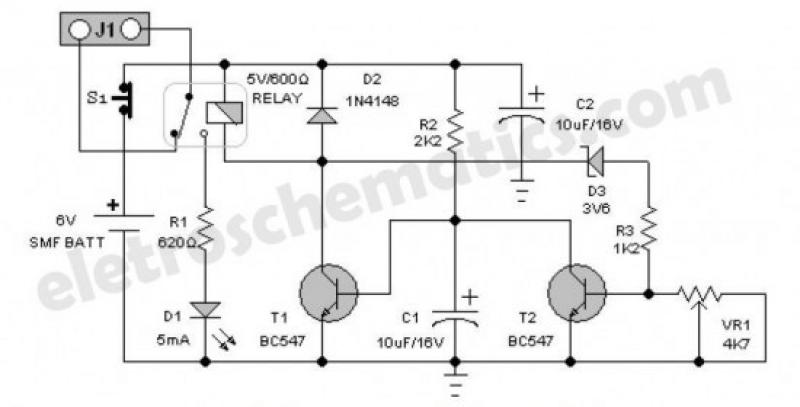
An emergency light is a light source designed to be available during emergencies. It operates automatically and is powered by a rechargeable battery.
An emergency light system typically consists of several key components: a light source, a rechargeable battery, a charging circuit, and an automatic control mechanism. The light source is usually an LED or incandescent bulb that provides illumination when the main power supply is interrupted.
The rechargeable battery stores energy to power the light source during outages. Common battery types include nickel-cadmium (NiCd), nickel-metal hydride (NiMH), or lithium-ion (Li-ion), chosen for their ability to hold charge and provide reliable performance.
The charging circuit is responsible for maintaining the battery's charge when the main power is available. This circuit ensures that the battery is adequately charged without overcharging, which could reduce its lifespan. It typically includes a transformer, rectifier, and voltage regulator to convert AC mains voltage to a suitable level for charging the battery.
The automatic control mechanism detects power failure and activates the light source. This can be achieved using a relay or a solid-state switch that monitors the input voltage. When the mains power drops below a certain threshold, the control circuit engages the light source, providing immediate illumination.
Overall, an emergency light system is essential for safety in various environments, including residential, commercial, and industrial settings, ensuring visibility and guidance during power outages or emergencies.As the name implies,emergency light is a source of light available during an emergency.It is an automatic system in which a rechargeable battery operated l.. 🔗 External reference
An emergency light system typically consists of several key components: a light source, a rechargeable battery, a charging circuit, and an automatic control mechanism. The light source is usually an LED or incandescent bulb that provides illumination when the main power supply is interrupted.
The rechargeable battery stores energy to power the light source during outages. Common battery types include nickel-cadmium (NiCd), nickel-metal hydride (NiMH), or lithium-ion (Li-ion), chosen for their ability to hold charge and provide reliable performance.
The charging circuit is responsible for maintaining the battery's charge when the main power is available. This circuit ensures that the battery is adequately charged without overcharging, which could reduce its lifespan. It typically includes a transformer, rectifier, and voltage regulator to convert AC mains voltage to a suitable level for charging the battery.
The automatic control mechanism detects power failure and activates the light source. This can be achieved using a relay or a solid-state switch that monitors the input voltage. When the mains power drops below a certain threshold, the control circuit engages the light source, providing immediate illumination.
Overall, an emergency light system is essential for safety in various environments, including residential, commercial, and industrial settings, ensuring visibility and guidance during power outages or emergencies.As the name implies,emergency light is a source of light available during an emergency.It is an automatic system in which a rechargeable battery operated l.. 🔗 External reference
